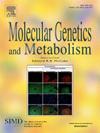溶酶体贮积病中溶血小板活化因子的继发性积累
IF 3.5
2区 生物学
Q2 ENDOCRINOLOGY & METABOLISM
引用次数: 0
摘要
溶酶体贮积病(lsd)是一组由编码溶酶体酶、跨膜蛋白或转运蛋白的基因缺陷引起的遗传性疾病。这些缺陷通常会导致溶酶体中未降解底物或阻塞物质的积累,作为主要的储存材料。然而,在某些lsd中,次级储存产物——如鞘糖脂、磷脂和胆固醇——也可以在组织中积累,独立于初级酶或蛋白质缺陷。在我们最近的研究中,我们发现溶血小板激活因子(lyso-PAFs)是多种lsd的二级储存化合物,包括尼曼-匹克病C1型(NPC1)、GM2激活因子缺乏和GM1神经节脂质沉积症(GM1)。我们正在进行的研究表明,lyso- paf也是Niemann-Pick病A型(NPA)、Sandhoff病(SD)、Tay-Sachs病(TSD)和Krabbe病(KD)中普遍存在的次生储存产物。我们观察到,在这些疾病中,lyso-PAF水平的升高与初级储存物质的积累显著相关,这表明它们有可能成为这些lsd疾病进展的生物标志物。此外,以腺相关病毒(AAV)为基础的基因疗法治疗导致TSD羊和GM1猫中枢神经系统lyso-PAF水平降低,进一步支持了它们作为治疗效果生物标志物的潜力。虽然目前尚不清楚溶酶- paf的变化是否直接导致疾病病理或仅仅反映疾病进展,但对其合成和降解所涉及的酶的进一步研究对于揭示其在lsd的细胞生理和病理中的功能作用至关重要。因此,进一步探索溶酶- paf在生物体液中作为预后和药效学生物标志物是必要的。本文章由计算机程序翻译,如有差异,请以英文原文为准。
Secondary accumulation of lyso-platelet activating factors in lysosomal storage diseases
Lysosomal storage diseases (LSDs) are a group of inherited disorders caused by defects in genes that encode lysosomal enzymes, transmembrane proteins, or transport proteins. These defects typically lead to the accumulation of undegraded substrates or obstructed substances in lysosomes, serving as primary storage materials. However, in certain LSDs, secondary storage products—such as glycosphingolipids, phospholipids, and cholesterol—can also accumulate in tissues, independent of the primary enzyme or protein defect. In our recent studies, we identified lyso-platelet activating factors (lyso-PAFs) as secondary storage compounds in multiple LSDs, including Niemann-Pick disease type C1 (NPC1), GM2 activator deficiency, and GM1 gangliosidosis (GM1). Our ongoing work suggests that lyso-PAFs are also prevalent secondary storage products in Niemann-Pick disease type A (NPA), Sandhoff disease (SD), Tay-Sachs disease (TSD), and Krabbe disease (KD). We observed that elevated lyso-PAF levels were significantly correlated with the accumulation of primary storage substances in these disorders, indicating their potential as biomarkers for disease progression in these LSDs. Moreover, treatment with adeno-associated virus (AAV)-based gene therapies led to a reduction in lyso-PAF levels in the central nervous systems of TSD sheep and GM1 cats, further supporting their potential as biomarkers for therapeutic efficacy. While it remains unclear whether changes in lyso-PAFs contribute directly to disease pathology or simply reflect disease progression, further research into the enzymes involved in their synthesis and degradation is essential for uncovering their functional role in the cellular physiology and pathology of LSDs. Thus, further exploration of lyso-PAF in biofluids as prognostic and pharmacodynamic biomarkers is warranted.
求助全文
通过发布文献求助,成功后即可免费获取论文全文。
去求助
来源期刊

Molecular genetics and metabolism
生物-生化与分子生物学
CiteScore
5.90
自引率
7.90%
发文量
621
审稿时长
34 days
期刊介绍:
Molecular Genetics and Metabolism contributes to the understanding of the metabolic and molecular basis of disease. This peer reviewed journal publishes articles describing investigations that use the tools of biochemical genetics and molecular genetics for studies of normal and disease states in humans and animal models.
 求助内容:
求助内容: 应助结果提醒方式:
应助结果提醒方式:


